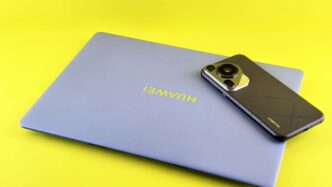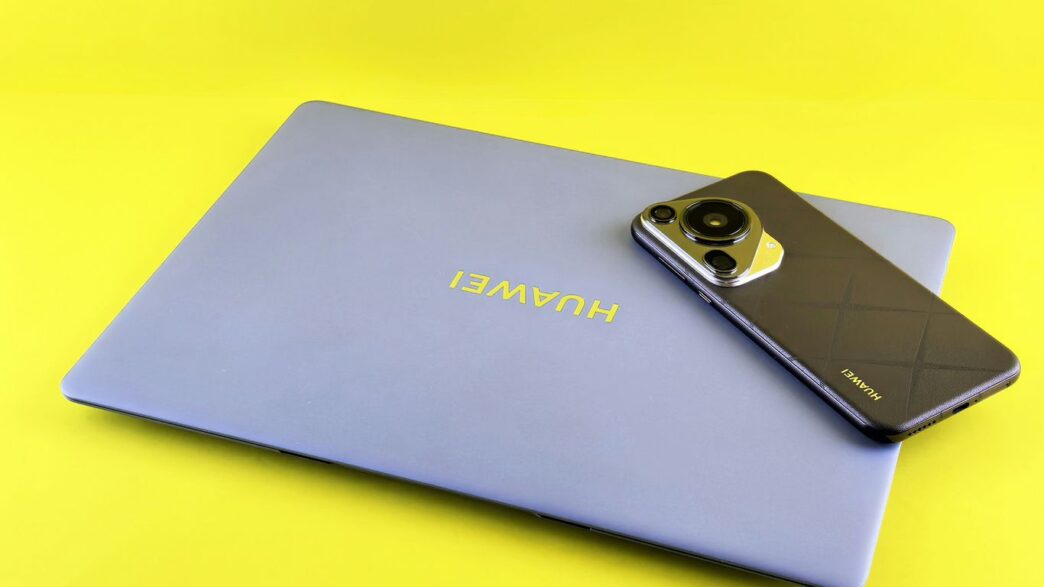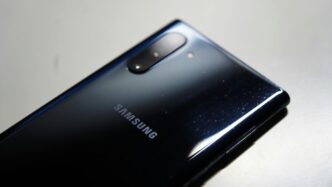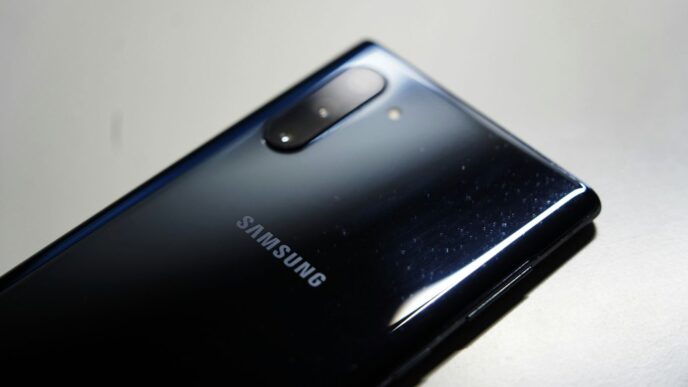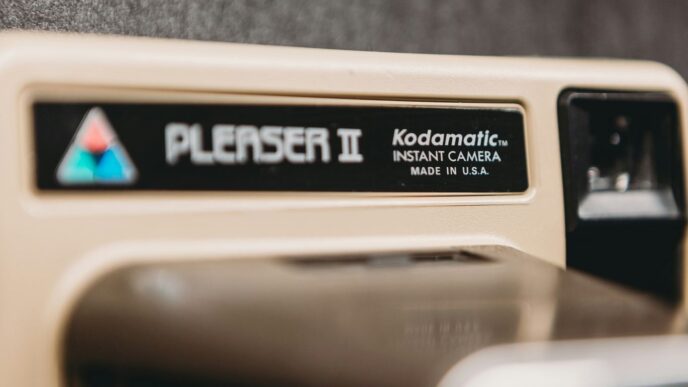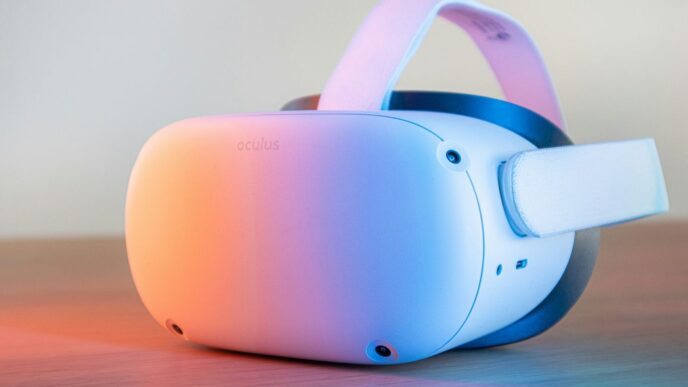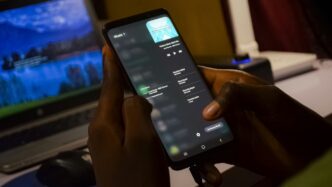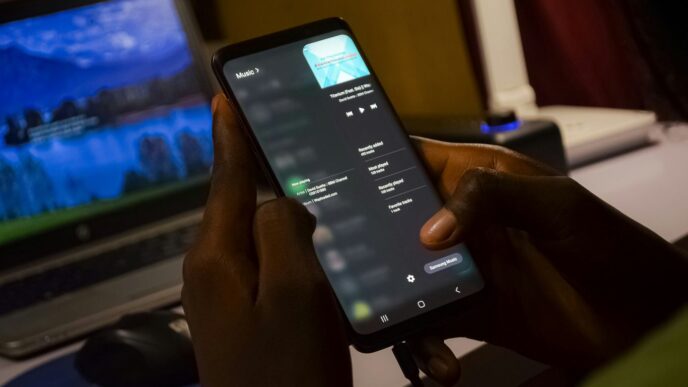Thinking about a new phone in 2025? You might want to look beyond the usual suspects. Chinese mobile phone brands have really stepped up their game, and honestly, they’re often leading the pack. We’re talking about phones that push boundaries with cool features and solid performance, sometimes at prices that make more familiar brands look a bit silly. Whether you’re after a battery that lasts forever, cameras that rival professional gear, or the latest foldable tech, there’s a Chinese phone out there that fits the bill. This guide is here to help you find the best Chinese mobile phone for you.
Key Takeaways
- Chinese smartphone brands like OnePlus, Xiaomi, and Oppo are now major players, often setting trends for the industry.
- Expect top-tier performance with the latest chipsets, ample RAM, and impressive display technology in 2025’s Chinese flagships.
- Camera systems continue to be a strong focus, with advanced multi-lens setups and large sensors making a big impact.
- Foldable phones are becoming more refined, with brands like Honor offering sleek designs and durable builds.
- Battery life remains a priority, with many high-end Chinese phones offering excellent longevity and fast charging capabilities.
1. OnePlus 13
Alright, let’s talk about the OnePlus 13. This phone is pretty much what you’d expect from OnePlus these days – a solid performer that tries to pack a punch without completely emptying your wallet. It’s got that new flat-sided design, which feels a bit different from their older curved edges, and they’ve managed to make it a little thinner too.
One of the big deals this year is the battery. They’ve put in a 6,000mAh silicon-carbon battery, which is a nice bump up from the previous model. Plus, it charges up super fast with 100W charging. Seriously, you can get a lot of juice in just a few minutes.
Under the hood, it’s running the latest Snapdragon 8 Elite chip, so performance is definitely not an issue. You can even get it with a whopping 24GB of RAM if you’re someone who really pushes their phone. The screen is a big 6.82-inch OLED with a QHD+ resolution and a refresh rate that can go from 1Hz all the way up to 120Hz. It’s also got some improved eye protection features, which is always good to see.
Here’s a quick look at some of the specs:
| Feature | Specification |
|---|---|
| Display | 6.82-inch OLED, QHD+, 1-120Hz |
| Chipset | Snapdragon 8 Elite |
| RAM | Up to 24GB |
| Battery | 6,000mAh, 100W charging |
| Durability | IP69 certified |
They’ve also managed to get an IP69 rating for water and dust resistance, which is a step up from the usual IP68. This means it should handle more than just a splash. While the camera setup is good, with triple 50MP sensors, some folks might find the telephoto lens a bit of a step down from the OnePlus 12. Still, for most people, the cameras will do a great job. It’s a strong contender, especially if you’re looking for a phone that balances power and features without hitting the absolute top-tier prices of some competitors.
2. Xiaomi 15 Ultra

Alright, let’s talk about the Xiaomi 15 Ultra. This phone is seriously something else, especially if you’re into taking pictures. It’s probably the best camera you can get on a phone right now, period.
First off, the performance is top-notch thanks to the latest Elite chipset. It handles heat pretty well, so you can keep using it hard without it getting too warm. And the battery life? It actually lasts, which is a nice surprise for a phone this powerful. The speakers are loud and sound good too, which is a bonus.
But the cameras are where it really shines. Having two telephoto lenses, each with its own strengths, is a game-changer. Plus, that main camera with its 1-inch sensor is something you don’t see every day anymore. It makes a real difference in photos.
Here’s a quick look at what makes it stand out:
- Camera System: A big 1-inch main sensor, plus two telephoto lenses for versatile zoom. It’s great for all sorts of shots, from wide landscapes to distant subjects.
- Performance: Powered by the newest Elite chipset, it’s fast and smooth for everything you do.
- Battery: You get solid battery life that should get you through a full day, even with heavy use.
- Display: A beautiful OLED screen with vibrant colors and smooth motion.
There’s also an optional photography kit you can get, which adds even more to the camera experience if you’re willing to spend a bit extra. It’s a bit of a hefty investment, but for serious mobile photographers, it might just be worth it.
3. Samsung Galaxy S25 Ultra
Alright, let’s talk about the Samsung Galaxy S25 Ultra. This phone is pretty much Samsung throwing everything but the kitchen sink into a device, and honestly, it mostly works. The screen on this thing is just unreal – seriously, the best I’ve seen on any phone, period. It’s bright, it’s sharp, and everything just pops. Plus, you still get that handy S Pen tucked away, which is great for jotting down notes or just doodling when you’re bored.
Samsung packed in a bunch of new AI features this year. Some of them are genuinely useful, like helping you clean up audio in videos or making quick edits. Others? Well, they’re still a bit hit-or-miss, but it’s clear Samsung is pushing hard in the AI space. Under the hood, it’s got the new Snapdragon 8 Elite processor, so performance is super smooth, no matter what you throw at it. The cameras are also a big deal here. You’ve got a really solid setup, especially the zoom capabilities, and they’ve even added some pro video tools that get it closer to what iPhones can do.
Here’s a quick look at what you’re getting:
- Display: A massive 6.9-inch panel that’s just gorgeous.
- Processor: The latest Snapdragon 8 Elite for top-tier speed.
- Cameras: A versatile system with a 200MP main sensor and multiple telephoto lenses.
- Stylus: The integrated S Pen is back and as useful as ever.
- Battery: A 5,000mAh cell that should get you through the day.
Now, it’s not all perfect. That $1,300 price tag is still pretty steep. If you’re coming from an S24 Ultra, you might not feel the need to upgrade unless your current phone is really showing its age. And honestly, for most people, the regular Galaxy S25 or the S25 Plus might be a better fit for their wallet, offering a lot of the same core features without the Ultra premium. But if you want the absolute best screen and the most flexible cameras Samsung offers, and you don’t mind the cost, the S25 Ultra is definitely a contender.
4. Apple iPhone 17 Pro
Alright, let’s talk about the iPhone 17 Pro. Apple’s really shaken things up this year with a design that’s a bit more… well, bold. Gone are the super minimalist looks of previous years. This phone feels more robust, and honestly, it’s got some serious battery life.
If you’re coming from an iPhone 14 Pro or anything older, this is a pretty sweet upgrade. You’re getting a better screen, faster charging, and cameras that actually feel new. Plus, with iOS 26, you get some neat tricks like live translation for calls and texts. That’s pretty handy.
But here’s the thing: if you just got the 15 Pro or even the 16 Pro, you probably don’t need this. Unless your current phone’s battery is totally shot, you might be better off just getting that swapped out. It’s a lot of money to spend for what might feel like a small jump.
Here’s a quick look at what you get:
- Screen Size: Available in 6.3 or 6.9 inches.
- Processor: Powered by the Apple A19 Pro chip.
- Cameras: A versatile setup with 48MP main, 48MP ultrawide, and dual 48MP telephoto lenses (4x and 8x optical zoom). The front camera is an 18MP shooter.
- Colors: You can grab it in Silver, Dark Blue, or Cosmic Orange.
The battery life on the Pro Max model is genuinely impressive, easily lasting a full day even with heavy use. The camera system, while keeping 48MP sensors across the board, offers improved detail, especially with the new 4x telephoto lens which is great for portraits. And that new selfie camera, dubbed ‘Center Stage’, takes 18MP shots and can even capture horizontal selfies when held vertically. It’s a solid phone, no doubt, but consider your current device before jumping in.
5. Xiaomi 15 Pro
While the Xiaomi 15 Ultra might be grabbing most of the headlines, don’t sleep on the Xiaomi 15 Pro. It’s shaping up to be a really solid option for anyone who wants a high-end Xiaomi experience without necessarily going for the absolute top-tier model. This phone packs a serious punch, especially considering its place in the lineup.
Under the hood, you’re looking at the same powerful Snapdragon 8 Elite chipset that’s powering the rest of the flagship crowd. This means you’ll have no trouble with demanding apps or games. What’s also great is the battery situation. The Xiaomi 15 Pro comes with a hefty 6,100 mAh cell, which should keep you going for a good while, even with heavy use. That’s actually a bit more juice than some other top phones out there.
When it comes to snapping photos, the 15 Pro doesn’t mess around. It features a triple 50MP camera system on the back. While it might not have all the bells and whistles of the Ultra, it’s still a very capable setup for everyday shots and more.
One detail that really stands out is the inclusion of an ultrasonic under-display fingerprint scanner. This is a nice upgrade over the optical sensors some phones still use, offering a more reliable and quicker way to unlock your device. It’s these kinds of thoughtful additions that make the Xiaomi 15 Pro a compelling choice for 2025.
6. Honor Magic V5
Alright, let’s talk about the Honor Magic V5. If you’re even remotely interested in foldable phones, this one is definitely worth a look. Honor has really been pushing the envelope with their foldable designs, and the V5 is no exception. It manages to feel both premium and surprisingly light, which is a big deal when you’re holding a device this size.
The build quality here is seriously impressive, using some pretty advanced materials that make it feel sturdy without being a brick. They’ve also managed to make the hinge quite robust, rated for a lot of folds, so you shouldn’t worry about it giving out after a year or two. Both the outer and inner screens are top-notch, bright, and smooth, making everything from scrolling through social media to watching videos a real pleasure. Plus, they even support a stylus, which is a nice touch for productivity.
Here’s a quick rundown of what makes it stand out:
- Design and Build: It’s remarkably thin and light for a foldable, using premium materials and a strong hinge. It even has decent water and dust resistance, which is rare in this category.
- Displays: You get large, sharp OLED screens with high refresh rates and good brightness, plus stylus support.
- Performance: It’s powered by a top-tier Snapdragon chip, so expect smooth performance for pretty much anything you throw at it.
- Cameras: The triple-camera setup is versatile and takes good photos and videos in most conditions.
- Battery: Battery life is solid, and the charging speeds, both wired and wireless, are very fast. You won’t be waiting around forever to top up.
- Software Support: Honor is promising a long software support period, which is great for longevity.
Now, it’s not all perfect. The crease in the middle of the main screen is still noticeable, though not the worst I’ve seen. Also, some features, like eSIM support, can vary depending on where you buy it, and the AI features aren’t quite as advanced as some competitors right out of the box. But honestly, for a foldable that’s this well-rounded and now available in more places, the Honor Magic V5 is a really strong contender in the premium foldable market for 2025.
7. Oppo Find X8 Ultra
The Oppo Find X8 Ultra really leans into being a camera powerhouse, and honestly, it shows. It’s got this big 6.82-inch AMOLED screen that looks great, and it’s smooth with its 120Hz refresh rate. Inside, it’s running the latest Snapdragon 8 Elite chip, so performance is definitely not an issue. You can get it with up to 16GB of RAM and a whopping 1TB of storage, which is pretty wild.
But let’s talk about the cameras, because that’s the main event. There are five lenses on the back. The main one uses a big 1-inch Sony sensor, which is supposed to be really good for low light. It also has a super-wide camera and two telephoto lenses – one for 3x zoom and another for 6x zoom. Oppo even added a special multispectral sensor. The 3x telephoto lens is new and supposed to be better at cutting down glare and making things clearer, and it can even act as a macro lens for super close-up shots.
Here’s a quick look at some of the specs:
- Display: 6.82-inch AMOLED, 1-120Hz adaptive refresh rate
- Processor: Snapdragon 8 Elite
- RAM: Up to 16GB
- Storage: Up to 1TB UFS 4.1
- Battery: 6,100 mAh
- Charging: 100W wired, 50W wireless
- Rear Cameras: 50MP main (1-inch sensor), 50MP ultrawide, 50MP 3x telephoto, 50MP 6x telephoto, multispectral sensor
It’s also pretty slim for what it packs in, measuring just 8.78mm thick. Plus, it’s got some handy extras like an IR blaster, which is always nice to have. If photography is your top priority in a smartphone, the Oppo Find X8 Ultra is definitely worth a serious look.
8. Xiaomi 15
Xiaomi’s lineup for 2025 is looking pretty solid, and the standard Xiaomi 15 is no exception. While it might not have all the bells and whistles of its Ultra sibling, it still packs a serious punch for its price point. This phone is a great choice if you want flagship performance without completely emptying your wallet.
Under the hood, you’re getting the same top-tier Snapdragon 8 Elite chipset that powers the more expensive models. This means you can expect smooth performance whether you’re gaming, multitasking, or just scrolling through social media. It’s not a watered-down experience at all; you’re getting the real deal.
Here’s a quick look at what you can expect:
- Performance: Powered by the Snapdragon 8 Elite chipset for top-notch speed.
- Display: A smaller screen compared to the Pro or Ultra, but still sharp and vibrant for everyday use.
- Battery: A decent battery capacity that should get you through a full day, though perhaps not as long-lasting as the larger models.
- Cameras: While not the absolute best Xiaomi has to offer, the camera system on the Xiaomi 15 is still very capable for capturing good photos and videos in most conditions.
It’s a smart pick for anyone who values raw power and a clean user experience. You get a lot of Xiaomi’s flagship tech in a more manageable package.
9. Samsung Galaxy Z Fold 7
Samsung’s Galaxy Z Fold 7 really feels like they’re getting closer to what a foldable phone should be. When you close it, it feels pretty much like a regular phone, which is nice. The cover screen is wider now, making it easier to use without unfolding the whole thing. And then, bam, you open it up to this big 8-inch display that’s great for doing a bunch of things at once.
The biggest news here is probably the camera system, which got a serious boost with a 200-megapixel main sensor. This means you’re getting photos that are actually as good as what you’d get from their top-tier S25 Ultra, which is pretty wild for a foldable. So, if you want a big screen experience but don’t want to sacrifice photo quality, this is a strong contender.
Here’s a quick look at some of its features:
- Design: It’s thinner and lighter than previous models, making it more comfortable to hold. It also boasts an IP48 rating, so it can handle a bit of water.
- Displays: You get a 6.5-inch cover screen and a large 8-inch internal display, both with improved aspect ratios.
- Performance: It’s powered by the Snapdragon 8 Elite processor, which handles Samsung’s AI features and multitasking well.
- Software: It launches with Android 16 and One UI 8, and Samsung promises seven years of software and security updates.
It’s not perfect, though. The battery life, while decent, still lags behind some competitors, and the charging speed isn’t the fastest. Plus, the $2,000 price tag is definitely something to consider. They also dropped S Pen support this year, which might be a bummer for some users.
10. Motorola Razr Ultra

Alright, let’s talk about the Motorola Razr Ultra. This phone is basically the Razr Plus from last year, but it’s like it went to the gym and came back super strong. It’s a really well-built foldable, and honestly, I’ve grown to really like it. It does all the regular phone stuff you’d expect, but that big cover screen? That’s where it gets fun. Paying for coffee with the phone closed just feels cool, you know?
But here’s the thing: all this ‘ultra’ stuff comes at a price. Motorola really pushed the limits with this one, and it seems like they might have lost some of that good value we saw before. This phone will set you back about $1,300.
So, who is this phone for? If you want a foldable that’s fun, looks good, and you’re willing to spend top dollar for the best processor, battery, and cameras Motorola has put out, then yeah, this could be it. The battery life is pretty solid, usually getting you through a full day and sometimes into the next. The displays are brighter too, and the main folding screen is a bit bigger and sharper than the previous model. Plus, the fabric back feels nice.
However, if you’re on the fence about foldables, maybe hold off. And if you’re often around sand or dust, be extra careful. While it has a good water resistance rating, dust is still a bit of a concern for any foldable.
Here’s a quick look at some specs:
- Main Display: 7 inches
- Cover Display: 4 inches
- Processor: Snapdragon 8 Elite
- Cameras: 50MP (wide), 50MP (ultrawide), 50MP (selfie)
- Colors: Scarab, mountain trail, cabaret, rio red
Wrapping It Up
So, there you have it. Chinese phone makers are really bringing it in 2025, offering some seriously impressive tech that can go toe-to-toe with anyone. Whether you’re after a foldable that bends the rules, a camera powerhouse, or just a solid phone that won’t break the bank, there’s a lot to like. It’s definitely worth looking beyond the usual suspects when you’re shopping for your next device. You might just find your perfect match from a brand you hadn’t even considered before.
Frequently Asked Questions
Why should I consider a Chinese phone in 2025?
Chinese phones are no longer just a different choice; they’re often leading the way with cool features and great value. Brands like OnePlus, Xiaomi, and Oppo offer amazing technology, sometimes at better prices than other big names. You can find phones with huge batteries, awesome cameras, and even new foldable designs.
What makes the OnePlus 13 stand out?
The OnePlus 13 is designed to be super durable, even having an IP69 rating for better water protection than most. It has a sleek new look with flat sides and a thinner body. Plus, its screen is great for your eyes, and it packs the latest powerful Snapdragon 8 Elite chip with a massive 24GB of RAM option!
What’s special about the Xiaomi 15 Ultra?
The Xiaomi 15 Ultra is a dream for photo lovers. It’s considered one of the best camera phones, featuring two different telephoto lenses for amazing zoom shots and a large 1-inch main camera sensor. It also has great battery life and loud, clear speakers, making it a top-notch phone overall.
How long should I expect my new phone’s battery to last?
Most good smartphones, especially the high-end ones, should last you a full day of normal use on a single charge. You might have a little power left at the end of the day, but it’s a good idea to charge it up every night.
How much storage space do I really need on a phone?
Nowadays, phones usually start with at least 128GB of storage, which is okay for apps and music. But since photos and videos are getting bigger, it’s smart to get a phone with 256GB or more if you can. This way, you won’t run out of space in a couple of years.
When is the best time to buy a new phone?
Often, the best deals happen right after a new phone is announced. Companies might offer special prices for pre-orders or throw in free accessories. Also, trade-in deals for your old phone can be really good when a new model first comes out, sometimes saving you a lot of money.

